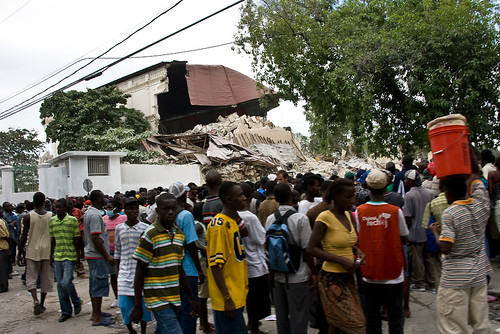
Michaela Hackner of Forum One emphasized the transformation we're witnessing as charities reach out to people online and through their mobile devices. She said the crux of the new paradigm is money, connections, and awareness. You could also add speed: Michaela cited stats from the Red Cross indicating that they raised $10 million in 48 hours via text-message donations.
There is also software springing up to assist aid workers, such as the Ushahidi Haiti map, and a Creole translation app emerging out of Crisis Camp. Of course with the new frontier that digital technologies make possible there is also room for abuse, such as the false rumor that American Airlines would be donating relief flights.
Michaela's key conclusion was that humanitarian and development aid and technology innovators need to get in the same room to understand challenges and share data. This would not only make the current response more effective, but could also help with longer-term questions of planning, transparency, and sustainability.
Andy Carvin of NPR presented a high-resolution map of Port-au-Prince that volunteers have helped build from satellite imagery, tagging hospital locations and other useful data. He said the map is downloadable to GPS devices for navigating the city. He also mentioned the Google People Finder tool, which the State Department has embedded on their website.
Jacob Colker of The Extraordinaries described a crowd-sourced system whereby global volunteers help process missing persons data from their home computers. Haiti earthquake images are pulled from news stories and Flickr and uploaded to a system where volunteers tag the photos with various characteristics—female, living, etc.—to populate a search engine. Matches in the search engine are then used to try and identify or connect people on the ground. He said that of 750 potential matches generated this way they had tried to reach out to 60 families, but had found it very difficult to get in contact.
Clearly some of these collaborations and projects are in early stages and rapid response mode, but there is a lot of potential for funding long-term, innovative crisis management strategies and technology infrastructure.
[PHOTO CREDIT: Georgia Popplewell (CC).]

No comments:
Post a Comment